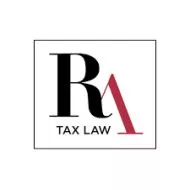When confronted with outstanding tax liability, individuals naturally harbor concern regarding the potential consequences and measures the Canada Revenue Agency ("CRA") can take against them. Failure to address these obligations promptly can trigger various forms of repercussions, including punitive measures such as penalties, accrued interest, wage garnishment and property liens.
Given the sanctity of one's home, this matter is of paramount concern for individuals in navigating their financial responsibilities. In this article, we will cover the intricacies surrounding CRA liens on property, shedding light on their implications and explore avenues for resolution.
The CRA's Authority
The authority of the CRA to place a lien on a home is derived from Canada's Income Tax Act ("ITA"). Specifically, sections 224 and 225 grant the CRA the power to collect unpaid taxes through various mechanisms, including the registration of liens on properties owned by taxpayers with outstanding tax debts. These provisions empower the CRA to take legal action to secure the repayment of tax liabilities when you sell your home, thereby safeguarding the integrity of the tax system.
As such, it is essential to understand that the lien does not give the CRA the automatic right to seize an individual's principal residence solely due to tax liabilities. Rather, comparable to a mortgage, the lien functions as a financial encumbrance against your property. The CRA will typically resort to lien registration as a last resort when it has exhausted alternative methods of collection or in situations where the debt owing is rather large.
The CRA does not do it often, but they do in extreme circumstances, have the power to force the sale of property.
Protecting Your Principal Residence
There are several steps you can take to protect your home from legal action by the CRA, such as:
- Timely Communication: If you are unable to pay your taxes on time, it is crucial to communicate with the CRA promptly. Explaining your situation and demonstrating a willingness to cooperate can often lead to more favorable outcomes.
- Negotiate Payment Arrangements: The CRA may be open to negotiating a payment arrangement based on your financial circumstances. This could involve setting up a payment plan or making an offer in compromise to settle the debt.
- Seek Professional Advice: Consulting with a tax lawyer can provide valuable insights into your options and help you navigate complex tax issues effectively.
- Utilize Tax Relief Programs: Depending on your situation, you may be eligible for taxpayer relief offered by the CRA.
Exploring these options could help alleviate your tax burden and prevent the need for drastic measures.
Lien Removal
If the CRA has already registered a lien against your property or other assets in Federal Court, there are some options you may consider for lien removal:
- Obtaining Financing: Securing financing to facilitate the removal of a lien can be a prudent step towards resolving outstanding tax obligations. Individuals may explore various avenues to obtain financing, including traditional lending institutions such as banks or credit unions, as well as alternative financing options such as private lenders or specialized financial institutions.
- Sale of Residence: By selling the property, individuals can generate funds to satisfy the outstanding tax debt and subsequently remove the lien. This approach allows for a clean break from the encumbrance of any tax obligations.
- Consumer Proposal: This constitutes a formal and legally binding procedure overseen by a Licensed Insolvency Trustee ("LIT") who collaborates with you to formulate a "proposal"—an offer aimed at compensating creditors with a portion of the owed amount, extending the repayment period, or both. Given that the lien is secured by the property, the proposal must include a specific provision stipulating the removal of the tax lien by the CRA upon the successful completion of the proposal. However, securing CRA's agreement to the proposal can be challenging, particularly depending on the magnitude of the outstanding debt.
Unfortunately, filing for bankruptcy will not remove the lien.
Conclusion
While the prospect of a CRA lien on your home can be daunting, it is essential to understand your rights and take a proactive approach in addressing any tax liabilities. By understanding your options and seeking professional guidance when needed, you can mitigate risks and protect your home.
The content of this article is intended to provide a general guide to the subject matter. Specialist advice should be sought about your specific circumstances.


